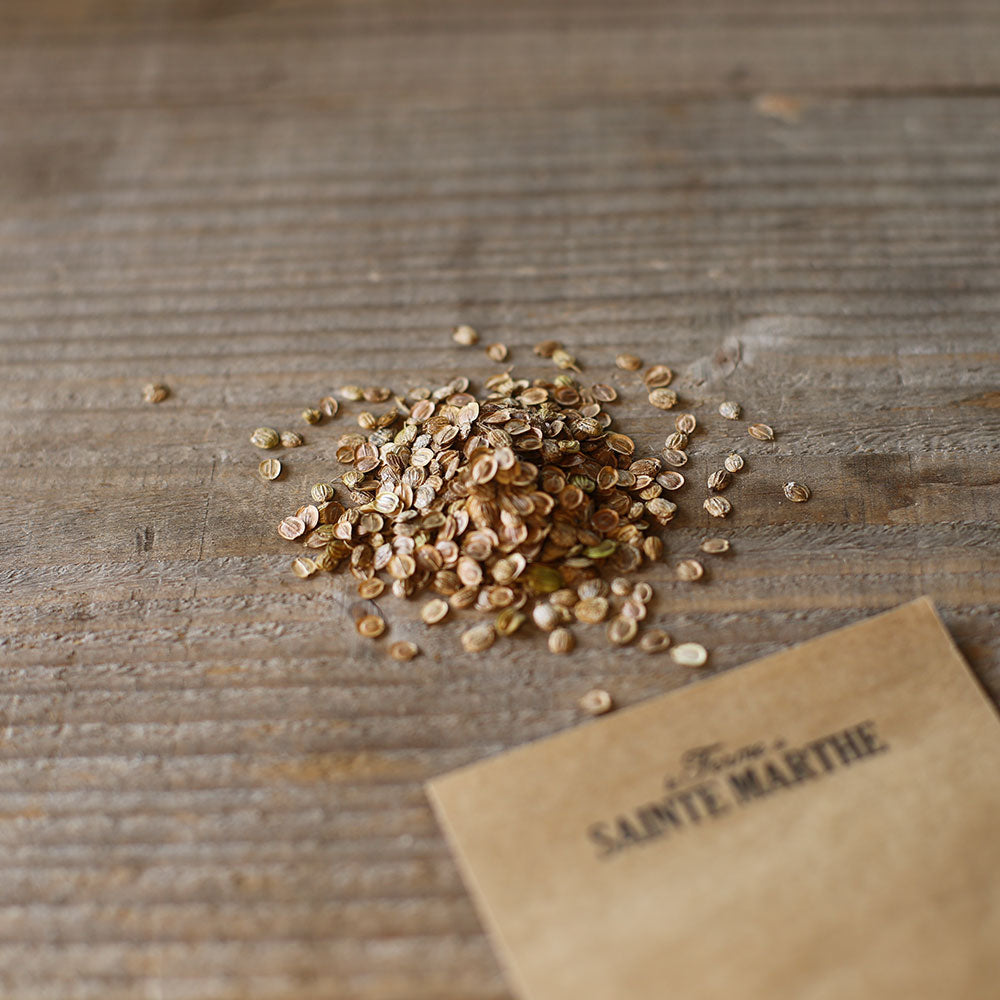EARLY ROUND PARSNIP AB
Pastinaca sativa
An early, heirloom variety from Russia, particularly suited to heavy soils and small gardens. It produces small, compact, white, spinning-top-shaped roots, about 7 cm in diameter and 10 cm long. This fast-growing variety develops foliage about a third of its usual height. It is quite sensitive to water stress and high heat, which causes bolting. A particularly tasty root, it adds a pleasant flavor to soups. It can also be used in stews, mashed, sautéed, or fried. Also known since the 1800s as: Short parsnip, Metz parsnip, Siam parsnip, Royal parsnip, Vitelot, Short-leaf parsnip, and Russian Kral short-leaf parsnip.
How to successfully sow parsnips
Sowing: from March to June in rows spaced 30 to 40 cm apart at a depth of 1 cm, in a sunny position in deep soil. Firm down. Parsnip germination is long and capricious, between 3 and 4 weeks, so be patient. The soil must remain moist until the first true leaves develop. You can cover the seed with a fine mulch of fresh grass or with a forcing fleece. In heavy soil or soil that dries poorly, do not hesitate to sow on mounds, even modest ones: a height of around 10 cm can be enough.
Thin out the row to 15 cm. Roots that are too close together will be too thin; on the contrary, if they are too spaced out, they will be spongy. Watering.
Parsnip cultivation
Keep the crop very clean for the first month, so that no competition develops. Then hoe to keep the soil fresh and supple, and finally mulch in the summer.
Water thoroughly in summer regularly, once a week for example.
Wait until the end of September, when the harvest generally begins.
Good associations
Parsnips will appreciate the proximity of carrots, leeks, onions or radishes.
Harvesting parsnips
Harvest approximately 5 months after sowing.
Preserving parsnips
Parsnips can be stored in the ground all winter, in sand in the cellar for several months, or frozen. Harvested after the first frost, they will be sweeter.
Risk information
May cause an abnormal skin reaction if skin contact occurs followed by exposure to sunlight.
Information on how to protect yourself
Avoid sun exposure after handling this plant. In case of contact, rinse exposed areas with water and wash any clothing that has been in contact. If an abnormal skin reaction occurs, consult a poison control center or doctor.
Additional optional information
Keep the label or a photograph of the plant to facilitate its identification.











